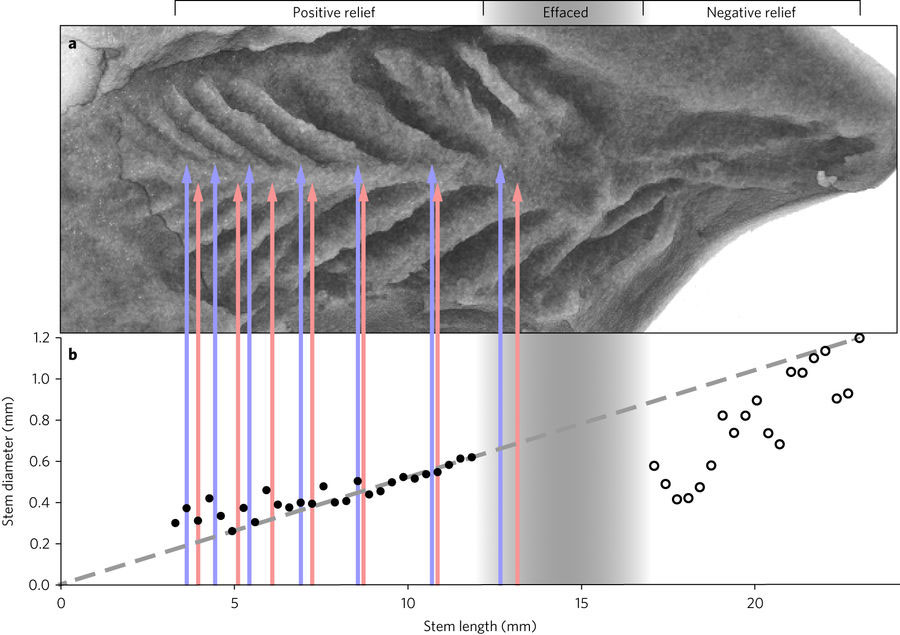栄養素依存的な成長がエディアカラ紀の体サイズの大型化を支えた
Nutrient-dependent growth underpinned the Ediacaran transition to large body size
2017年7月10日 Nature Ecology & Evolution 1 : 1201 doi: 10.1038/s41559-017-0222-7

枝分かれした葉のような形が特徴的な大型のランゲオモルフの化石は、ガスキエス氷期(5億8000万年前)の後に出現する(5億7100万年前)。しかし、大型化の生物学的メカニズムや、海洋地球化学との関連の可能性については調べられていない。今回我々は、マイクロCTおよび写真測定を数理・コンピューターモデルとともに用いることにより、ランゲオモルフの分枝節間の成長が相対的表面積の縮小とともに減退したことを示す。このことは、葉状体のサイズと形状が栄養素の取り込みに直接応答していたことを示唆している。
Corresponding Author
Macroscale rangeomorph fossils, with characteristic branching fronds, appear (571 Myr ago) after the Gaskiers glaciation (580 Myr ago). However, biological mechanisms of size growth and potential connections to ocean geochemistry were untested. Using micro-computerized tomography and photographic measurements, alongside mathematical and computer models, we demonstrate that growth of rangeomorph branch internodes declined as their relative surface area decreased. This suggests that frond size and shape were directly responsive to nutrient uptake.

